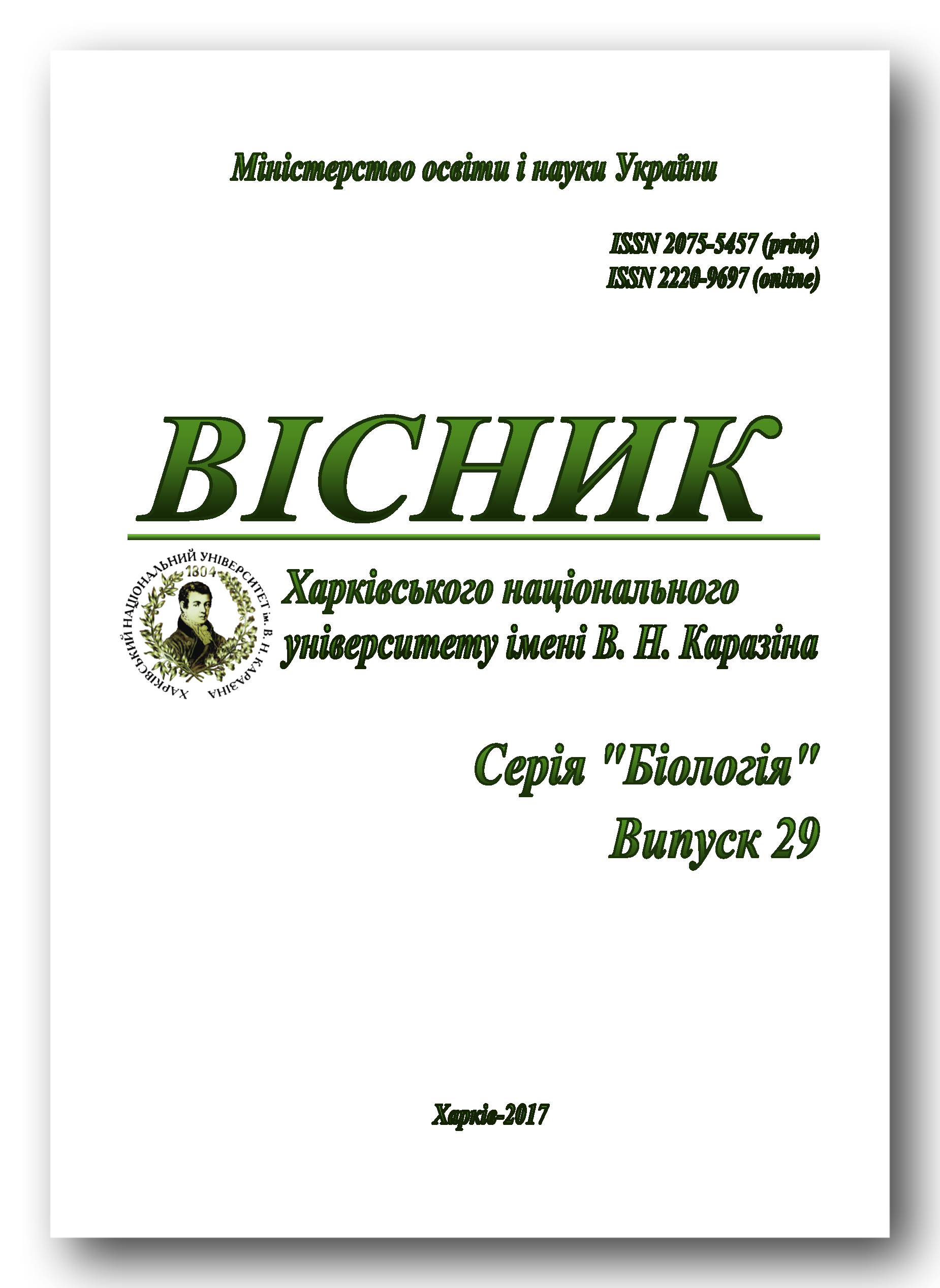Особливості гомологічної кон'югації політенних хромосом за впливу мікрохвиль і статичного магнітного поля у Drosophila melanogaster Meig.
Анотація
Метою роботи було вивчити вплив мікрохвильового випромінювання, статичного магнітного поля та їх сумісної дії на порушення гомологічного спарювання політенних хромосом у Drosophila melanogaster Meig. Матеріалом для дослідження була інбредна лінія Canton-S. Застосовували мікрохвилі з частотою 36,64 ГГц і щільністю потужності 1 Вт/м2 протягом 30 секунд і статичне магнітне поле напруженістю 25 мТл протягом 5 хв. Вплив електромагнітних полів здійснювали на стадії яйця після 2-годинної яйцекладки. Політенні хромосоми досліджували на давлених препаратах слинних залоз, забарвлених ацетоорсеїном. Для приготування препаратів використовували самок на стадії 0-годинної передлялечки. Мікрохвилі зменшували частоту асинапсису гомологічних хромосом на 18,1%. Статичне магнітне поле не мало значущого впливу. Комбінована дія цих чинників зменшувала частоту асинапсису в гігантських хромосомах дрозофіли на 37,1%. Отримані результати свідчать про вплив електромагнітних чинників на гомологічну кон'югацію хромосом в ядрах соматичних клітин. Таким чином, показана можливість їх впливу на транс-взаємодії локусів гомологічних хромосом.
Завантаження
Автори залишають за собою право на авторство своєї роботи та передають журналу право першої її публікації на умовах ліцензії Creative Commons Attribution License 4.0 International (CC BY 4.0), яка дозволяє іншим особам вільно розповсюджувати опубліковану роботу з обов'язковим посиланням на авторів оригінальної роботи.




